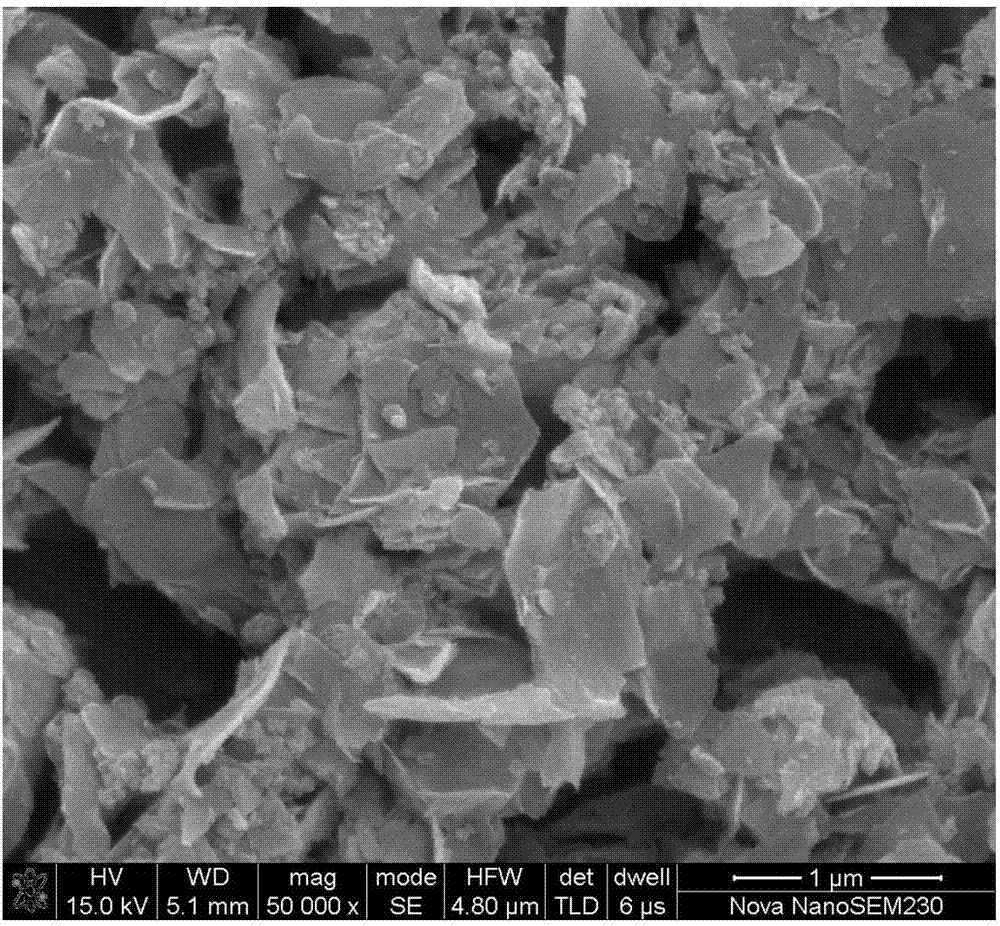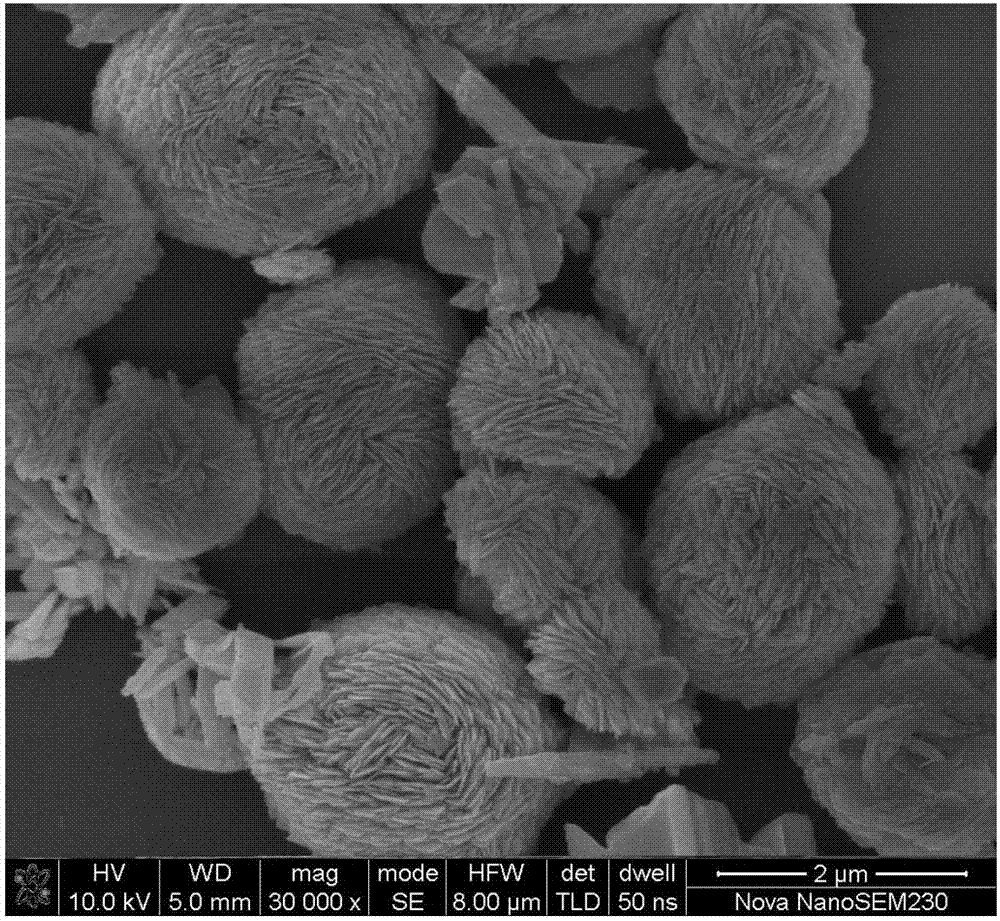Preparation method of metastable phase bismuth oxide and application thereof in photocatalytic degradation of organic pollutants
A bismuth oxide, metastable phase technology, applied in chemical instruments and methods, physical/chemical process catalysts, chemical/physical processes, etc. The effect of high specific surface
- Summary
- Abstract
- Description
- Claims
- Application Information
AI Technical Summary
Problems solved by technology
Method used
Image
Examples
Embodiment 1
[0039] Embodiment 1 (control experiment group)
[0040] 1. Weigh 113.04mg of ammonium bismuth citrate and 9mg of urea into 25ml of water, stir well at room temperature until completely dissolved into a white solution;
[0041] 2. Weigh 72.89mg of cetyltrimethylammonium bromide (CTAB) and add it to the above solution;
[0042] 3. Adjust the pH to 7, then stir for 30 minutes, transfer to a polytetrafluoroethylene liner, keep it in a stainless steel reactor at 180°C for 18 hours, and cool it down to room temperature naturally after the reaction;
[0043] 4. Collect the above reaction products, centrifuge them three times with water and alcohol at a speed of 13,000 rpm, dry them at 60°C, label sample 1, and save them for subsequent testing.
[0044] The final product was identified as bismuth oxycarbonate by X-ray diffraction, but due to the low content of urea, the morphology of bismuth oxycarbonate was shown as nano flakes and did not self-assemble into microflowers. (See Figu...
Embodiment 2
[0046] 1. Weigh 113.04mg of ammonium bismuth citrate and 15mg of urea into 25ml of water, stir well at room temperature until completely dissolved into a white solution;
[0047] 2. Weigh 72.89mg of cetyltrimethylammonium bromide (CTAB) and add it to the above solution;
[0048] 3. Adjust the pH to 7, then stir for 30 minutes, transfer to a polytetrafluoroethylene liner, keep it in a stainless steel reactor at 180°C for 18 hours, and cool it down to room temperature naturally after the reaction;
[0049] 4. Collect the above reaction products, centrifuge them three times with water and alcohol at a speed of 13,000 rpm, dry them at 60°C, label sample 2, and save them for subsequent testing.
[0050] The visible light degradation performance test of the prepared bismuth oxycarbonate microflowers is as follows: add 10 mg of sample and 15 mL of rhodamine B solution (10 mg / L) to the reactor, stir in dark field for 60 min to reach adsorption equilibrium, and then irradiate with a vi...
Embodiment 3
[0052] Embodiment 3 (control experiment group)
[0053] The preparation method of bismuth oxycarbonate micron flower of the present invention, comprises the following steps:
[0054] 1. Weigh 113.04mg of ammonium bismuth citrate and 45mg of urea into 25ml of water, stir well at room temperature until completely dissolved into a white solution;
[0055] 2. Weigh 72.89mg of cetyltrimethylammonium bromide (CTAB) and add it to the above solution;
[0056] 3. Adjust the pH to 7, then stir for 30 minutes, transfer to a polytetrafluoroethylene liner, keep it in a stainless steel reactor at 180°C for 18 hours, and cool it down to room temperature naturally after the reaction;
[0057] 4. Collect the above reaction products, centrifuge them three times with water and alcohol at a speed of 13,000 rpm, dry them at 60°C, label sample 3, and save them for subsequent testing.
[0058] X-ray diffraction identified the final product as bismuth oxycarbonate, and its morphology also showed th...
PUM
| Property | Measurement | Unit |
|---|---|---|
| specific surface area | aaaaa | aaaaa |
| diameter | aaaaa | aaaaa |
Abstract
Description
Claims
Application Information
 Login to View More
Login to View More - R&D
- Intellectual Property
- Life Sciences
- Materials
- Tech Scout
- Unparalleled Data Quality
- Higher Quality Content
- 60% Fewer Hallucinations
Browse by: Latest US Patents, China's latest patents, Technical Efficacy Thesaurus, Application Domain, Technology Topic, Popular Technical Reports.
© 2025 PatSnap. All rights reserved.Legal|Privacy policy|Modern Slavery Act Transparency Statement|Sitemap|About US| Contact US: help@patsnap.com



